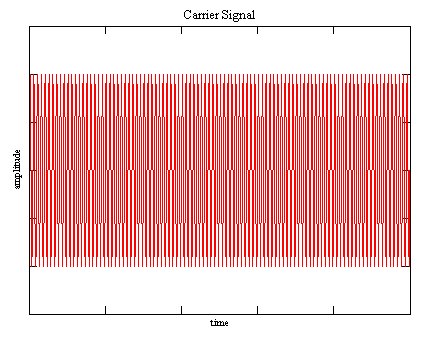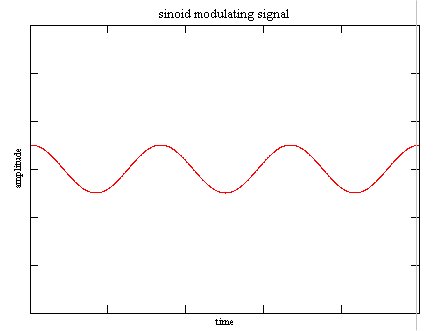Amplitude modulation: Difference between revisions
Jump to navigation
Jump to search
(please correct this) |
(some pics demonstrating AM) |
||
| Line 3: | Line 3: | ||
The Carrier Signal has usually a higher [[Frequency]] than the modulating signal. |
The Carrier Signal has usually a higher [[Frequency]] than the modulating signal. |
||
==An Example== |
==An Example== |
||
{| |
|||
|[[Image:AM_picture1.jpg|Carrier Signal in time domain]] |
|||
|[[Image:AM_picture4.jpg|Carrier Signal in frequency domain (to be added)]] |
|||
|- |
|||
Picture3: Modulating Signal in time domain |
|||
|[[Image:AM_picture2.jpg|Modulating Signal in time domain]] |
|||
|[[Image:AM_picture5.jpg|Modulating Signal in frequency domain (to be added)]] |
|||
|- |
|||
Picture5: Modulated Signal |
|||
|[[Image:AM_picture3.jpg|AM Signal]] |
|||
|[[Image:AM_picture6.jpg|AM Signal in frequency domain (to be added)]] |
|||
|} |
|||
==special kinds of AM== |
==special kinds of AM== |
||
Revision as of 21:43, 26 September 2004
What is AM?
Amplitude Modulation is the done by modulating the Amplitude of an sinoid Carrier signal. The Carrier Signal has usually a higher Frequency than the modulating signal.
An Example

|
Carrier Signal in frequency domain (to be added) |

|
Modulating Signal in frequency domain (to be added) |

|
AM Signal in frequency domain (to be added) |
special kinds of AM
- DSSC, double side band supressed carrier
- SSB, single side band
- residual sideband modulation (modulation used for analog TV applications)
- QAM